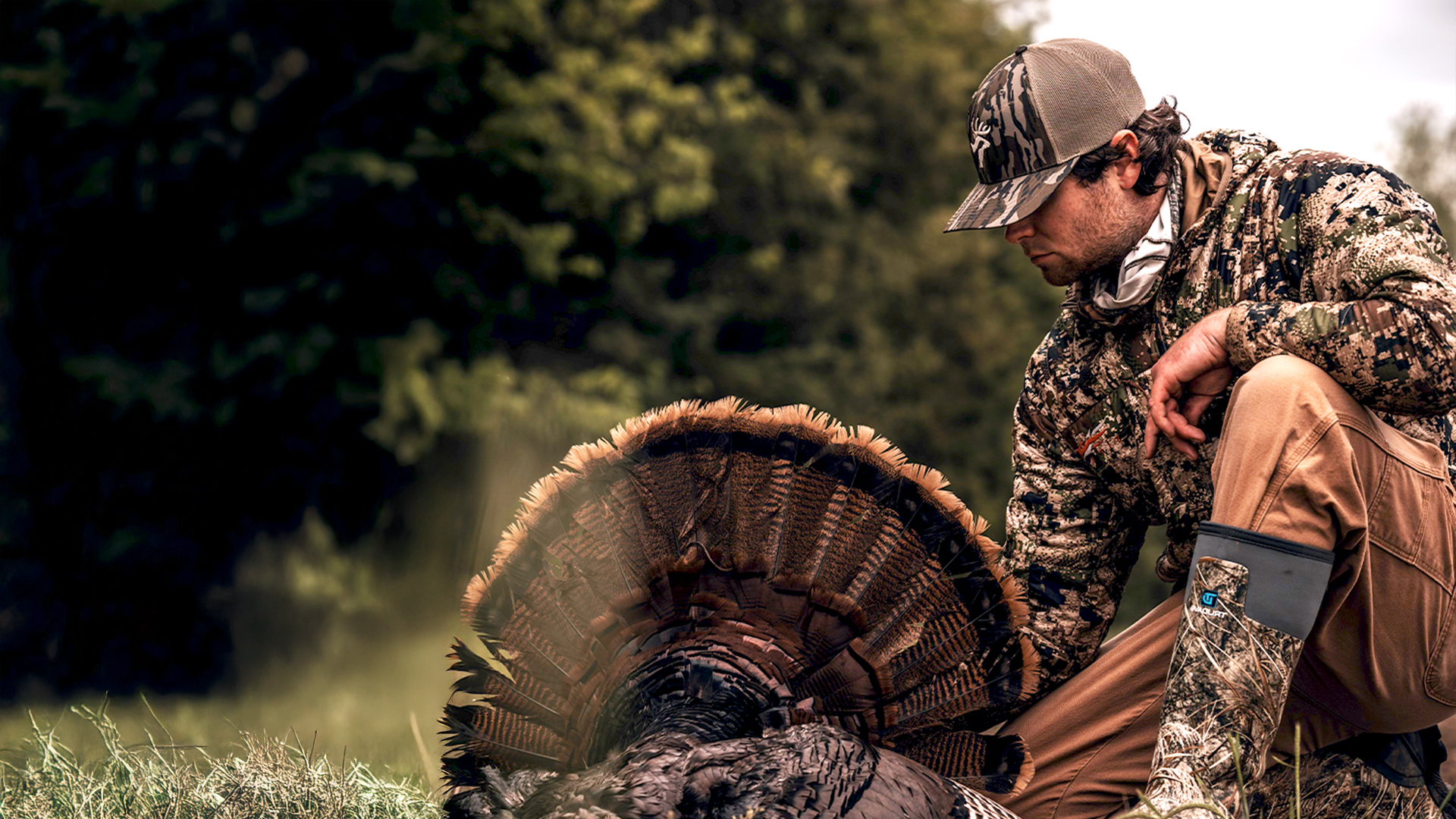Spring is in the air, and for turkey hunters, that means one thing—it’s time to dust off the gear, scout the woods, and get ready for an adrenaline-pumping season. Spring turkey hunting is one of the most exciting and challenging pursuits in the field. With gobblers fired up and responding to calls, hunters must be strategic, patient, and well-prepared to outsmart these wary birds. Whether you’re a seasoned hunter or gearing up for your first spring turkey season, this guide will help ensure you’re fully prepared for success.
1. Know the Spring Turkey Behavior
Understanding the seasonal behavior of turkeys is key to a successful hunt. In spring, gobblers are actively searching for hens to breed, making them highly vocal and responsive to calls. However, they’re also cautious and can be difficult to lure into range.
- Early Season (Pre-Breeding): Gobblers are still flocked up with hens, making it challenging to call them away. Patience and scouting are critical.
- Mid-Season (Peak Breeding): This is the prime time to hunt. Dominant toms become aggressive, responding well to calling. Lone gobblers are more likely to break away from hens and come in.
- Late Season (Post-Breeding): As hens begin nesting, gobblers roam more and can be easier to call in. However, they’re also more wary due to increased hunting pressure.
Scouting before the season opens will give you insight into turkey movement patterns, roosting sites, and feeding areas, setting you up for a successful hunt.
2. Gear Up for Success
Essential Turkey Hunting Gear
Having the right equipment can make all the difference in bagging a spring gobbler. Here’s what you’ll need:
- Shotgun & Choke Tube: A 12- or 20-gauge shotgun with a tight choke (extra full or turkey choke) ensures a dense pattern for ethical kills.
- Turkey Loads: Use heavy loads of No. 4, 5, or 6 shot for optimal range and penetration.
- Camouflage: Full camo, including gloves and a face mask, helps you blend in and avoid a turkey’s sharp eyesight.
- Turkey Calls: Carry a variety of calls, including a box call, slate call, and diaphragm call, to match different hunting scenarios.
- Decoys: A realistic hen or jake decoy can draw gobblers into shooting range.
- Binoculars: Spotting turkeys from a distance helps you plan your approach.
- Ground Blind or Seat Cushion: If you’re hunting from the ground, a blind or seat cushion makes long sits more comfortable.
Proper gear preparation will save you time in the field and increase your chances of success.
3. Scouting and Locating Gobblers
Pre-season scouting is one of the most important steps in a successful turkey hunt. Start scouting several weeks before the season opens to locate birds and establish their routines.
Where to Look:
- Roosting Areas: Turkeys roost in trees overnight, often in hardwoods near water sources.
- Feeding Zones: Look for scratch marks, droppings, and tracks in fields, open woodlands, and along field edges.
- Strutting Zones: Gobblers display in open areas to attract hens—these are prime ambush locations.
How to Locate Gobblers:
- Listen at Dawn & Dusk: Gobblers sound off naturally in the mornings and evenings.
- Use Locator Calls: A crow or owl call can trigger a shock gobble, revealing a tom’s location.
- Glass with Binoculars: Spotting gobblers in open fields will help determine where they are feeding and strutting.
By the time the season opens, you should have a solid plan for where to set up based on turkey movement patterns.
4. Mastering Turkey Calling Techniques
Calling is an art, and using the right call at the right time is crucial for luring in a gobbler.
Types of Calls and When to Use Them:
- Yelps: The most common call to mimic a hen. Use a soft yelp to coax a gobbler closer.
- Clucks & Purrs: Used when a turkey is nearby but hesitant, these sounds reassure gobblers.
- Cutting: A series of fast, sharp clucks that mimic an excited hen, often triggering a gobbler’s response.
- Gobble Call (Use with Caution): Mimics a male turkey and can attract dominant toms, but should be used carefully to avoid alerting other hunters.
Mixing different calls naturally and avoiding overcalling will help make your setup more realistic and effective.
5. Setting Up the Perfect Ambush
A good setup is just as important as good calling. When positioning yourself:
- Choose High Ground: Turkeys prefer to move uphill. Setting up slightly above a gobbler increases the chances he’ll come into range.
- Stay in the Shadows: Position yourself where the sunlight won’t expose you.
- Use Natural Cover: Sit against a large tree or inside a brush pile to break up your silhouette.
- Decoy Placement: Set decoys 15-20 yards from your position, facing slightly toward or away from your location.
Positioning yourself wisely can mean the difference between a successful hunt and a missed opportunity.
6. Making the Shot
When the moment arrives and a gobbler is in range, patience and proper shot placement are crucial.
- Wait for a Clear Shot: Let the gobbler fully commit before raising your shotgun.
- Aim for the Head and Neck: This is the most effective kill shot for turkeys.
- Take Your Time: If the turkey hangs up, stay still and let him make the next move.
After the shot, always approach the downed bird cautiously to ensure it is fully expired before handling.
7. Post-Hunt Tips and Turkey Processing
After a successful hunt, it’s important to handle your turkey properly.
- Field Dressing: Remove the entrails promptly to preserve meat quality.
- Plucking vs. Skinning: Pluck the feathers if you want to roast the turkey whole, or skin it for quick processing.
- Save the Beard, Spurs, and Fan: Many hunters preserve these as trophies.
Turkey meat is delicious and can be cooked in various ways, from roasting to frying. Proper care after the harvest ensures the best flavor and texture.
Final Thoughts
Spring turkey hunting is one of the most thrilling experiences in the woods. The combination of strategy, patience, and skill required makes it an incredibly rewarding pursuit. By preparing your gear, scouting thoroughly, mastering calling techniques, and setting up effectively, you’ll increase your chances of success this season.
So, as the gobblers begin to sound off at sunrise, the only question left is—are you ready?


